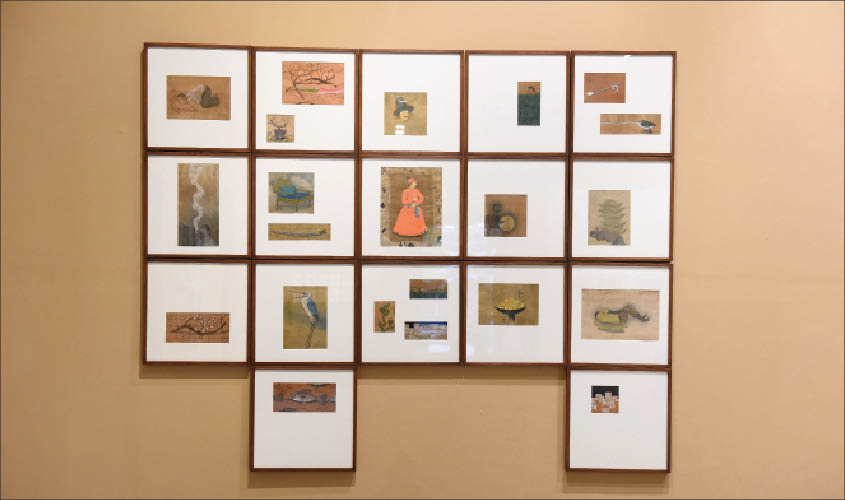Featuring paintings, sketches, installation and mixed-media pieces, the ongoing exhibition at Delhi’s Bikaner House is an artistic exploration of subjects like urbanity and displacement. At its centre are works by four contemporary artists, writes Bhumika Popli.
Only a few things could happen if you uproot an artist from his native place and put him into an alien setting. He would either become chronically depressed, leave his practice; and if the situation is slightly better, he would think of channelling all his negativity into his work. But on the other hand, if he is elated interacting with the new setting, he will put all his impressions on his canvas. This last is the theme of the ongoing group show at Delhi’s Bikaner House, entitled (Re) Visiting the Urban.
The paintings, sketches, installations and mixed-media artworks included in the show are about the many influences absorbed by the participating artists as they moved from one city to another across India. The exhibition, organised by the online gallery Anant Art, features works by four emerging artists, namely Birender Yadav, Ravi Kumar Chunchula, Sajeev Visweswaran and Digbijayee Khatua.

When Digbijayee Khatua relocated from the Kendrapara district in Odisha to Delhi six years back, he was amazed to see the towering buildings and the haphazard city life. He says, “Everything, literally everything fascinated me here. Be it the buildings, the people and even the pollution. I didn’t judge this city but marvelled at the scenes I saw here.”
Khatua’s main interest is architecture. He has put watercolour cut-outs—for a 3D effect—of architectural sketches on his canvases. According to him, Delhi and Odisha are connected. “Minerals like iron are found in abundance in my state and here I see extensive use of concrete bars made with iron at construction sites. Similarly, milk is produced in abundance in Odisha but many

Another participant in the show, Dhanbad-born artist Birender Yadav’s work is very much about the present political scenario in India. According to him, Dhanbad, a city in Jharkhand, is also a political playing field just like Delhi. It is a setting for polticial protests and politically-inspired violence. In his artworks for the show, Yadav uses gunpowder extracted from matchsticks as his primary medium. And all his pieces here are made using elements from matchboxes. He says, “I think my work is between art and activism—a kind of silent protest. I make what I see.”
Sajeev Visweswaran, an artist from Kerala, is also influenced by politics. His pen and ink drawings, exhibited here, are created themed around the recent spate of protests in Kashmir, where a lot of protestors were attacked by pellet guns. We also see his Theatre series—gouache on paper—where the artist attempts to understand transitory relationships with people he has come across in his life. According to his statement, “This vehicle allows me to engage my personal losses with the traces of strangers that have come and gone and with the unknown elements of their public lives and private emotions.”

When you see Ravi Kumar Chunchula’s work, you find a quirky take by the artist on city life. He shifted to Delhi from rural Andhra Pradesh. In his gouache paintings, of varying sizes, we see a mix of rural and urban themes. There is a human figure walking around barbed wire, a cactus planted adjacent to a house, a maharaja with rats near his feet, and so on.
Looking at the exhibition, especially the works of Khatua and Yadav, you ask yourself, wouldn’t it be better if the exhibits were to be displayed in a public setting? Say, for example, if one puts Khatua’s works near some big corporate offices in Gurgaon, and take Yadav’s works near Jantar Mantar? And just watch people’s reaction. Wouldn’t it be better?
‘(Re) Visiting the Urban’ is on view at Delhi’s Bikaner House till 18 October

